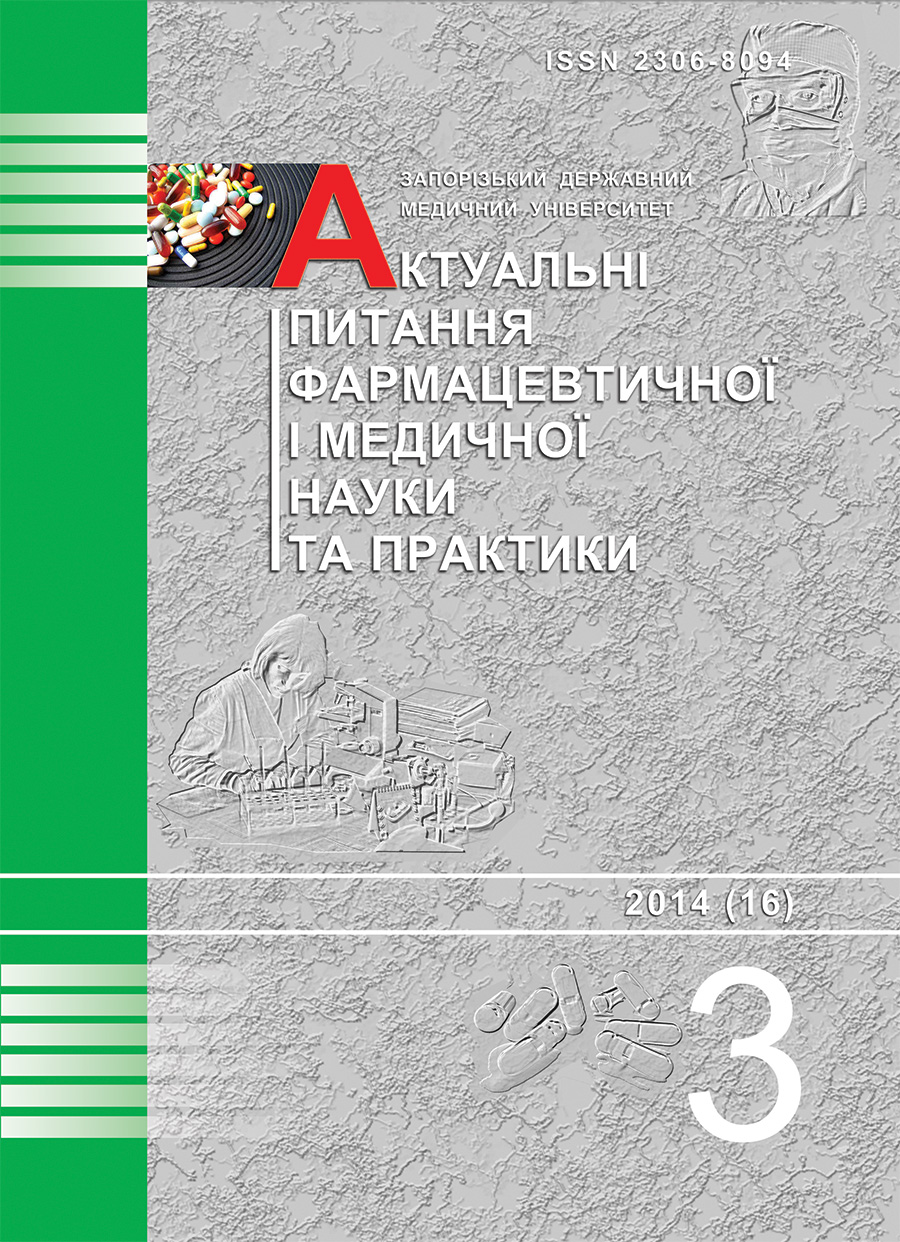QUALITY OF PATIENT’S LIFE AFTER MULTIPLE MYELOMAREGRESSION
DOI:
https://doi.org/10.14739/2409-2932.2014.3.33877Keywords:
quality of life, multiple myeloma, survival, prognosisAbstract
The aim of this study was to compare the quality of patient’s life after multiple myeloma regression in regard with demographic, clinical, psychosocial risk factors of poor prognosis, depending on the occurrence of cardiovascular events.
Methods: Subjects with full or partial remission of multiple myeloma were enrolled in the study.Diagnosis and staging of multiple myeloma were defined by current clinical practice guidelines. To be achieving remission chemotherapy with MPT, MP, CVP, PAD, VMPT, VADTD, CTD, VMP was used accordingly contemporary clinical guidelines. All subjects were at full or partial remission stage at baseline.
Surveys were given to multiple myeloma survivors on average who participated in the study after reaching regression and were monitored during 12 months. 95 patients were invited to complete the 36-item Short Form Health Survey (SF-36) and the Quality of Life-Cancer Survivors questionnaire (QOL-CS), and 89 patients (93.7%) responded. Standardized measures of quality of life, perceptions of the impact of myeloma, symptoms, and demographic variables were examined using linear regression modeling to identify predictors of quality of life over time.Echocardiography in B-mode was performed accordingly to Recommendation of American Society of Echocardiography on the scanner “MyLab 50” (Italy) using a transducer with a frequency of 2.5-3.5 MHz.
Results: One hundred three cumulative clinical events occurred in 38 patients (42.7%). Patients who had cardiovascular events reported significantly worse psychological well-being, general health, less vitality and health-related quality of life than patients who had not cardiovascular events. Chemotherapy was associated with quality of life outcomes. Patients who were not diagnosed cardiovascular events reported better social well-being than patients who were diagnosed cardiovascular events.
Improvement in life quality over a long period has not been documented previously in patients with multiple myeloma, although it is known that they experience a significant improvement in life quality soon after the completion of therapy compared with their baseline levels. The observed differences in life quality were significant only when they were measured with the QOL-CS, and not with the SF-36. This may reflect, in large part, the fact that the QOL-CS was developed specifically for use among cancer survivors, whereas the SF-36 is a generic HRQL instrument.
Conclusion: The general health perceptions and vitality levels of multiple myeloma survivors with cardiovascular events remained significantly lower than those of patients without cardiovascular events.
References
Abernethy, A. P., Ahmad, A., Zafar, S. Y., Wheeler, J. L., Reese, J. B., & Lyerly, H. K. (2010) Electronic patient-reported data capture as a foundation of rapid learning cancer care. Med. Care., 48, S32–S38. doi: 10.1097/MLR.0b013e3181db53a4.
Der-Martirosian, C., Kritz-Silverstein, D., & Barrett-Connor, E. (2010) Five-year stability in associations of health-related quality of life measures in community-dwelling older adults: The Rancho Bernardo Study. Qual. Life Res., 19(9), 1333–1341. doi: 10.1007/s11136-010-9700-y.
Ganz, P. A., Desmond, K. A., Leedham, B., Meyerowitz B. E., & Belin, T. R. (2002) Quality of life in long-term, disease-free survivors of breast cancer: A follow-up study. J. Natl. Cancer Inst., 94(1), 39–49. doi: 10.1093/jnci/94.1.39.
Norman, G. R., Sloan, J. A., & Wyrwich, K. W. (2003) Interpretation of changes in health-related quality of life: The remarkable universality of half a standard deviation. Med. Care., 41(5), 582–592.
Osborne, T. R., Ramsenthaler, C., de Wolf-Linder, S., Schey, S.A., Siegert, R.J., Edmonds, P.M., & Higginson, I.J. (2014) Understanding what matters most to people with multiple myeloma: a qualitative study of views on quality of life. BMC Cancer., 14(1), 496. doi: 10.1186/1471-2407-14-496.
Osborne, T.R., Ramsenthaler, C., Siegert, R. J., Edmonds,P. M., Schey, S. A., & Higginson, I. J. (2012) What issues matter most to people with multiple myeloma and how well are we measuring them? A systematic review of quality of life tools. Eur. J. Haematol., 89(6), 437–457. doi: 10.1111/ejh.12012.
Reeve, B. B., Potosky, A. L., Smith, A. W., Han, P. K., Hays, R. D., Davis, W. W., et al. (2009) Impact of cancer on health-related quality of life of older Americans. J. Natl. Cancer Inst., 101(12), 860–868. doi: 10.1093/jnci/djp123.
Sangha, O., Stucki, G., Liang, M. H., Fossel, A. H., & Katz, J. N. (2003) The Self-Administered Comorbidity Questionnaire: A new method to assess comorbidity for clinical and health services research. Arthritis Rheum., 49(2), 156–163.
Sonneveld, P., Verelst, S. G., Lewis, P., Gray-Schopfer, V., Hutchings, A., Nixon, A., & Petrucci, M. T. (2013) Review of health-related quality of life data in multiple myeloma patients treated with novel agents. Leukemia, 27(10), 1959–1969. doi: 10.1038/leu.2013.185.
Ware, J. E., Kosinski, M. A. (2004) SF-36 Physical and Mental Health Summary Scales: A Manual for Users of Version 1. Lincoln, RI: Quality Metric.
Downloads
How to Cite
Issue
Section
License
Authors who publish with this journal retain copyright and grant the journal right of first publication with the work simultaneously licensed under a Creative Commons Attribution License that allows others to share the work with an acknowledgement of the work's authorship and initial publication in this journal.


